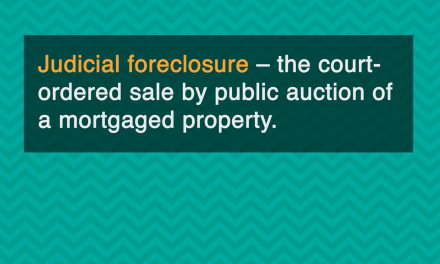With current mortgage rates as low as they were during the Great Depression, homeowners are refinancing to shorten their loan term from 30- to 15-year fixed rate mortgages (FRMs). Since interest rates are so low, homeowners can shorten their loan term substantially and pay a mere $300 to $500 more a month.
One in four homeowners refinanced into a 15-year fixed rate mortgage in the first half of 2010. This was a notable increase from 2007, when approximately one in ten homeowners refinanced to a 15-year FRM.
Of course, most homeowners currently do not qualify for a refi. The majority of homeowners who are taking advantage of low interest rates on 15-year FRMs are settled in their homes with a dependable and substantial income stream. In other words, the recent trend in 15-year refis does not apply to the millions of distressed and underwater homeowners who actually need the benefits that lower interest rates supply. [For more information on mortgage refinancing for underwater homeowners, see the September 2010 first tuesday article, FHA “Short-Refi Program” debt relief for underwater homeowners.]
first tuesday take: The upward trend of 15-year refis is a simple example of low interest rates helping the rich get richer — not a bad thing generally, but when economic stimulus is limited to benefiting the already well-off, something has obviously gone awry. As it is, only those homeowners who currently have reliable jobs, earn a sizable income and have a positive equity in their property can qualify for refis.
For California, those homeowners most likely to refi on a 15-year FRM probably purchased or last refinanced their home before 2002 (read: pre-boom), since most homes purchased or refinanced after 2002 are currently underwater and not eligible for a refi, 15-year or otherwise. The 15-year refi is being exploited by homeowners who only have 15 to 22 years remaining on their present home loan.
Interest rates are low for one reason: the Federal Reserve (the Fed) is driving them down to encourage spending to stimulate the economy (read: create jobs — the primary task of the Fed). The magic of lower interest rates only works when lower interest makes acquiring cash less expensive, which in turn leads to more lending, increased spending, business development and thus more jobs. [For more information on the role of the Federal Reserve, see the December 2009 first tuesday article, The lender of last resort: understanding the function and methods of the Federal Reserve.]
This use of the 15-year refi runs contrary to the Fed’s plans for reinvigorating the economy. When homeowners choose to refinance at a shorter term while making an equal or greater monthly mortgage payment as they were on their 30-year loan, they render lower interest rates powerless to generate economic growth. If these homeowners refinanced at a lower interest rate over the same loan term remaining on their previous loan in order to lower their monthly payments, they would create discretionary income and generate greater spending power to purchase goods and services in the marketplace. Rather than seeing the light of day in the marketplace, this greater wealth created by the Fed’s actions by lowering interest rates is simply being buried in homes on a 15-year FRM loan.
Even if we jettison the argument that this wealth should be spent rather than saved (increased saving will never lead to economic recovery, just ask Japan), homeowners should still be wary of sinking more money in their home, which is essentially what a 15-year payoff does. The stability of home prices is far from certain. Judging from the steady, year-long increase in mortgage delinquencies and continuing job losses in California, home prices will likely continue to trend down.
Homeowners would be financially better off, now and in the future, by refinancing their current mortgage for a 30-year FRM at a lower interest rate. Then, if they want to develop wealth, they should place their new-found cash into a savings account, lest they refinance their home for 15 years at an appraised value that continues to drop, which would essentially render both their efforts and the Fed’s pointless. Later, if they wish to pay-down principal on their new mortgage to match a 15-year payoff period, they may do so with savings.
Re: “Refinancing into shorter loans” from the New York Times














First to come journalbeta.firsttuesday.us. I agree with told all above.
It is not necessarily the “wealthy” that are refinancing but the “frugal”. A well earned benefit of their fiscal restraint.
Many of my investor clients reaching retirement age have chosen to refinance their long term rentals to 30 year loans thus reducing their monthly payments (sometimes even taking cash out to increase liquidity) and keeping their properties thus avoiding capital gain taxes that end up being about 40% state & federal with the new 3.8% medicare penalty & depreciation recovery.
Refinancing to a 15 or 20 year loan rarely makes sense. If you can lower your rate 1.5 to 2 points then refi to a 30 year. Then make additional principal payments to lower your amortization period if you want. If your ability to pay declines then you can ultimately fall back to the lower payment. You might even be able to get your lender to re-amortize the loan if you have substatially reduced the principal.
If you can not lower your rate by 1.5 to 2% then you will be better off applying the loan fees to principal and lowering the amortization period and the total interest payments over the life of the loan.
create jobs — the primary task of the Fed…
The primary task of the fed is to make sure the money supply is sufficient to ensure full employment and steady prices, not to create jobs, which is done by the private sector in the ostensibly good economic environment the fed has created. Never in it’s history has it explained how it reconciles this with the constitutional mandate to congress to regulate the value of money as a store of value. You can’t manipulate the dollar to create full-employment conditions and/or stable prices for commodities, while at the same time maintain the currency’s value. Since the one is mandated by the constitution, and the other the product of congressional legislation, the fed’s actions are clearly at odds with constitutional government, and must go.
…increased saving will never lead to economic recovery…
This is an astounding statement. It used to be that banks lent money, that is, the deposits it had. That is, NOTHING happened unless and until there were savings.Now, since banks are free to CREATE money rather than lend it, the importance of savings does indeed look dated. But as Lord Keynes noted, when asked whether this system could endure, “we are all dead in the long run”. This is the long run, people, a system about 80 years long in the tooth.
When you hear someone say “double-dip”, you can rest assured you’re listening to an educated boob.
What we’ve seen these past few years is not part of any “business cycle”, but the culmination of many decades of incompetence at the highest levels of banking. This is just a continuation of the crisis of the S&L’s of the early 80’s(remember CDs that were created to save the S&Ls), the same crisis which appeared again in the late 80s, and resulted in the RTC, reared it’s head again in the mid 90’s, when congress decided that everyone, regardless of income, had the “right” to affordable housing. Legislation does not change reality. Our government has ruined our currency trying to achieve certain social goals, and they’re now blaming the private sector.
Patrick, I sure hope you don’t get sick or otherwise lose your ability to make money.
I’m a seasoned loan officer in CA. There’s no doubt that the 15-yr product is highly attractive to many homeowners right now, but I’d take issue with the notion that there’s any kind of mass migration to 15-year loans by “the wealthy”, much less any negative impact to consumer spending the author suggests. In fact, the majority of my high net worth clients are very comfortable in ARMs right now, which are also at record lows.
It’s a different paradigm — the truly wealthy have far more efficient venues for investing and making money that they’d otherwise throw away on a depreciating asset — like CA real estate.
I’d argue instead that the 30-to-15-year converters are more of the established upper-middle class — white collar professionals in their 40s and 50s who are looking towards their retirement years with the goal of not being saddled with a huge mortgage and no resale recourse. And THAT is a VERY sound financial strategy for those who have the stability and reserves to see a 15-yr loan through, taking advantage of these rates while they’re available. I’m perfectly comfortable offering 20-year and 15-year term loans right now — to the right client.
So why should they not gain the benefits. They are a good risk and pay the bill. If Underwriting guidelines were as normal and “all” must qualify and show ability to pay the mortgage in a consistant manner. America would not be in this position if the basic rules had been kept in check.
Don’t buy into the Commie drivel of this Author.
And Carlos, you should stop thinking that the rich have time to care about taking the time to screw you… like most Libs, ya do it to yourself.
Let people use money in the manner they deem to be the MOST EFFICIENT.
Great take from first tuesday on this low interest rates, makes a lot of sense though, the rich control the flow of the economy, not only did they screwed it up but now they are also taking advantage of the mess they created to begin with, is this new? not at all, pretty much the same song historically speaking, except this mess it’s of a greater magnitude than ever, in my opinion the worse is yet to come.